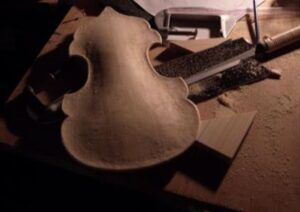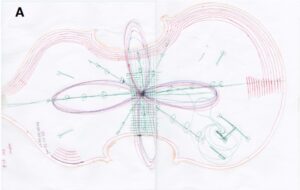Shape and sound of ancient musical instruments -part4
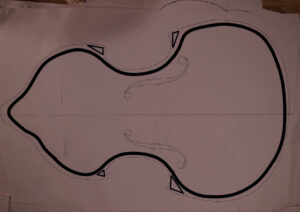
So far, we’ve explained that negative depressions tend to acoustically divide the instrument. The essential point is that when the frame indicated by the thick frame is shrunk toward the center, it can be uniformly shrunk to one point. What can be shrunk is a design that has the potential to create an acoustically unified one. Also, since the vibrations in the treble range, intermediate range, and bass range must be included evenly, it is not possible to make very elongated ones. Therefore, it seems that the best shape is to connect two drums and squeeze the middle. If there are three, it will be elongated (Kemenche).
Also, since it is a bowed string instrument, there is a request to make the center thinner due to its structure. In that case, I think that the thick frame in the photo is basically the essence of the acoustically meaningful design.
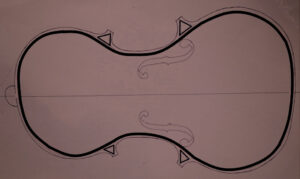
This is a violin, but if the thick frame part in the above image is essential, I feel that the decorative corner part (the part drawn with a triangle) is unnecessary. In fact, it seems that a person named Beyomu made such an instrument. Since the instrument does not have the triangular part and block shown in the previous two instruments, vibration division does not occur. It is thought that the bass is dominant and the treble is not produced. Therefore, the block in the triangular part has two meanings, the purpose of structural reinforcement and the purpose of increasing the split vibration to enrich the tone.
A guitar-shaped violin with no corners can achieve the same purpose by attaching blocks at the same position, but the area of the bold frame will be narrowed. The fact that the drum becomes smaller leads to the inability to produce a powerful and loud sound.
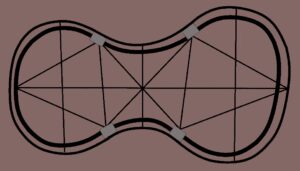
Due to the block, the bold frame becomes the inner line. If the bold frame is to be large, the block should be on the outside, and it will be in the shape of a violin.
In this way, the shape of the violin seems to be the most rational design, both acoustically and structurally.
Next, I would like to think about the ratio of top, middle, and bottom of the bold frame.
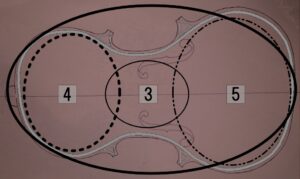
The upper, middle and lower parts of the violin are called upper bouts, middle bouts and lower bouts from the top. The modern standard dimensions (Stradivari) seem to be in a ratio of 4: 3: 5. Does this ratio have any rational meaning?
It was the discovery of Pythagoras that “musical tones have a simple integer ratio”. Is it something to do with it?
To be continued…
- カテゴリー
- BLOG

